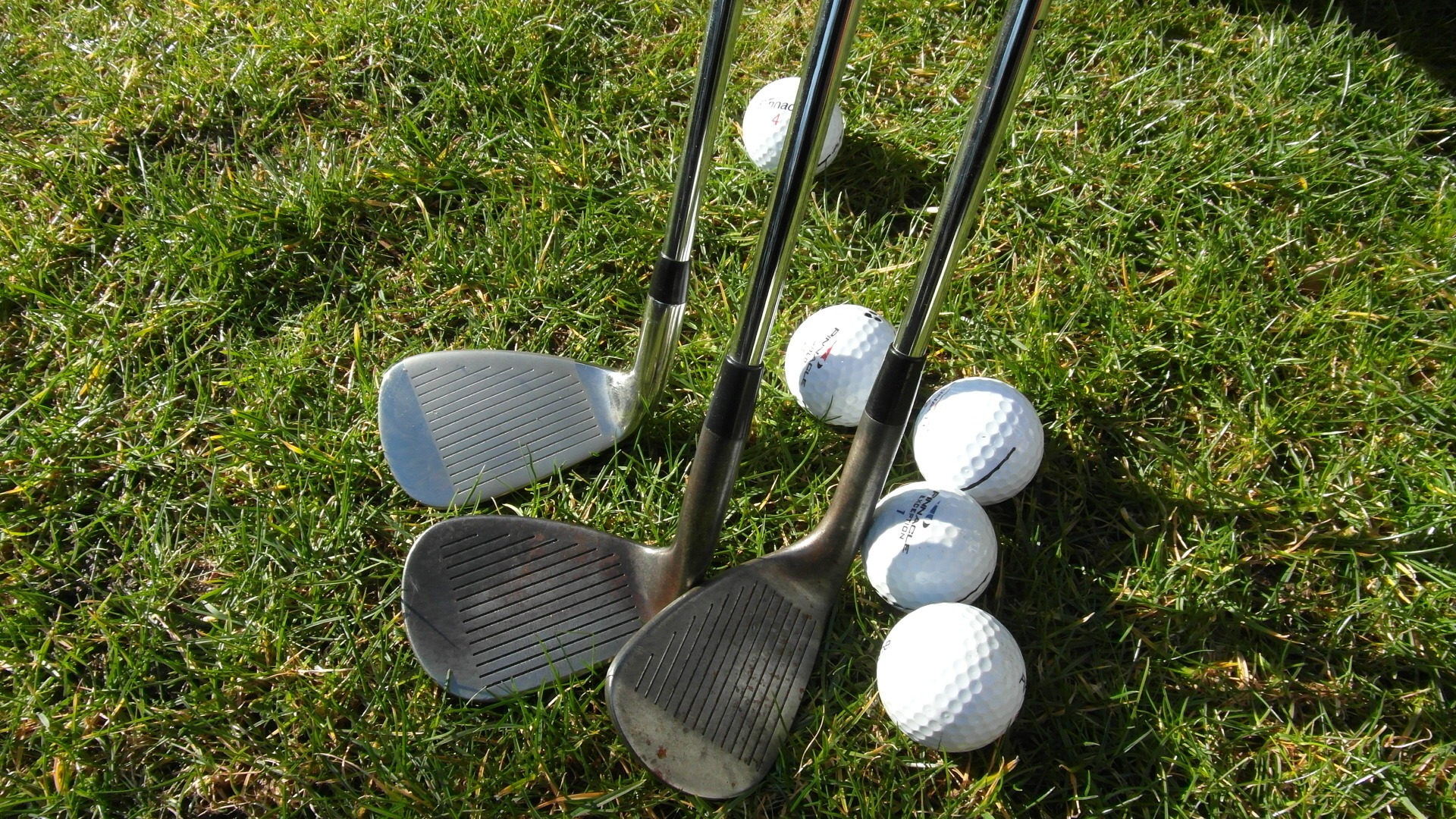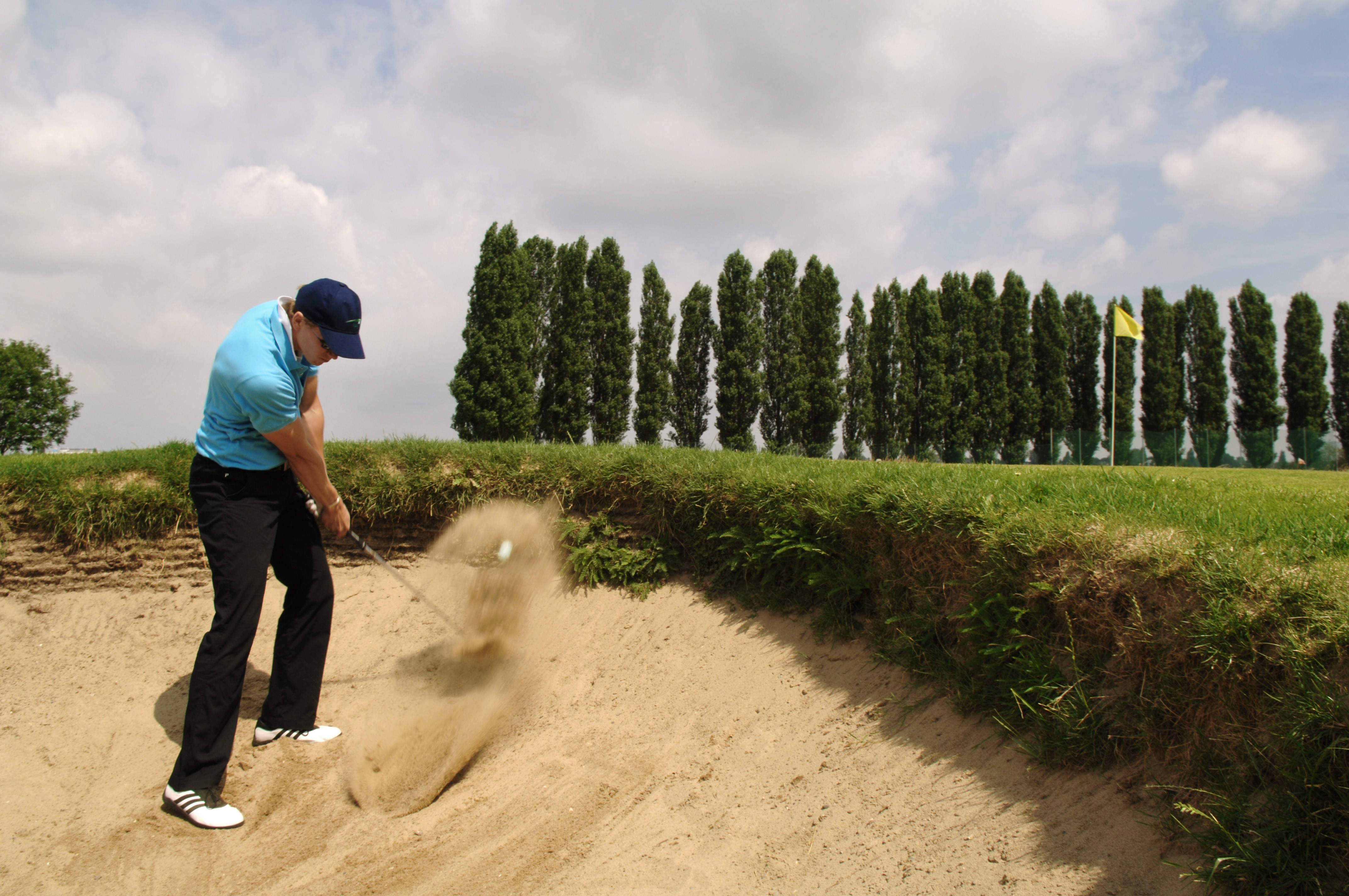
Pick one wedge as your go to wedge.
I suggest using a 54-56 degree as your “go to” wedge. Do 90% of your wedge practicing with this club every time you go to the range. To hone your wedge distances, hit 10 practice range shots with this club and note the average distance, this is the full swing distance for this wedge. Next take 10 practice shots with a half swing and average the distance the ball lands and where it ends up. You should notice that these shots are a little straighter than your full shots and should have a smaller circle of where the ball ended up (dispersion).
Let’s say, for example, you hit it 50 to 60 yards with a half swing and it sits down pretty close to where it lands, then you have a “go to” new wedge distance. Be sure to practice this swing hundreds of times the first few times you go to the range in the beginning of the season.
Now, if you have a 30 to 40 yard shot, you only need to take it back about a third of a swing. Practice this shot dozens of times. It is a great confidence booster to know that when you are 30 -4 0 yards out that you will hit the green 90+ out of 100 times.
With most touch wedge shots stand with a narrower stance, don’t open the face of the club, let the loft do its job and square the face. The key is to hit the ball with an even tempo and brush the grass at their roots; don’t dig in and make a divot, only loose grass should come up after the swing. These three swings can get you on the green from 30 to 90 yards in to the green almost every time, and that will give lower your scores.

Take more club than you think into the green.
For shots 85 to 100 yards, try a gap wedge for straighter shots from this distance, even though hitting a full 56 degree maybe within your full swing range. At these distances, direction can be the difference between landing on the green and having a putt for your next shot, or going into a bunker or water hazard and losing a stroke.
- use your gap wedge and choke down about an inch
- tighten your stance, but flare left foot about 5-10 degrees open (towards flag)
- take half a swing back and half a swing through (ending about waist high)
The ball will roll out a bit but with a little practice this will be another “go to” shot that will lower your scores.

How to get out of the bunker every time.
Nothing can ruin a round more quickly than bad bunker play. In fact, most greenside bunkers can be easily navigated by evaluating the three main factors: condition of the sand, height of the bunker lip, and minimum carry distance to get out of the bunker.
If the sand in loose and seems ample, then hit one inch behind the ball with a shallow swing path, the club should actually slide under the ball, with the sand pushing or exploding the ball out of the bunker. This type of shot requires a full swing and follow through, because it is actually the sand pushing the ball up out of the bunker.
If the sand is more compressed or lacking, take a very shallow swing where the bounce or sole of the wedge hits about ½ inch behind the ball. In this case do not try to blast the ball out on a bed of sand, instead pick it clean like it was on hardpan. This type of shot requires less speed to move the ball out. If one mainly hits the ball, it will have back spin on it when it lands and checkup close to where it lands.

